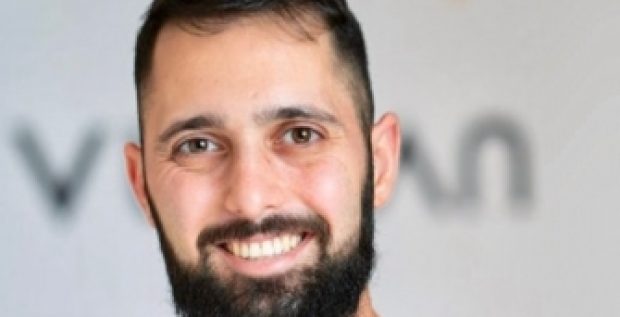Jonathan Hunter is the founder and CEO of Department 13. Headquartered in Columbia, Maryland, Department 13 develops counter drone technology with applications in both commercial and and homeland security settings. Unlike directed energy weapons or radio jammers, the company’s Mesmer technology disables unmanned aerial vehicles with minimal collateral damage and radio interference.
Jonathan is a Bronze Star-decorated former U.S. Army Explosive Ordnance Officer who has spent decades helping defense, federal law enforcement, and commercial organizations disable Improvised Explosive Devices. He spoke with Ron Gula, President of Gula Tech Adventures, for this interview.
RON GULA: Jonathan, we’re really excited to have you share some information about your past and Department 13. Could you give us a little bit of your history of how you came to be the CEO and founder of Department 13?
JONATHAN HUNTER: Absolutely. I’m a former U.S. army EOD [Explosive Ordnance Disposal] officer. I’ve done four deployments to Afghanistan, one to Bosnia. And one of the things I learned a lot about was electronic warfare on the battlefield. From an operational standpoint, there was a lot of knowledge to be gained.
I met a couple ofgentlemen—Robi Sen,the [company’s]CTO, and Steve Shattil, the CSO, and I had these discussions about how you could affect radios in that operational environment—i.e. Iraq or Afghanistan. They had this interesting concept that I’ve never heard anyone discuss, and that’s actually taking over the communication of the radio.
We took that idea, that premise, and we started the company Department 13 in 2010, all around that premise that you can actually affect the behavior of the radio itself. We got some work from DARPA—the Department of Army Research Project Agency—some work from OSD, which is the Office of Secretary of Defense, all around affecting the radio protocols. We did talk to the FBI regarding some of this research we had been doing. They were very interested. They brought us a lot of coffee for about two years. We had discussions on and off. There’d be a bombing in Africa, they’d say, “Jon, let’s go have some coffee,” and we’d go have coffee with them.
Eventually, what happened was unfortunately the [2013] Boston [Marathon] bombings happened, and everything we had been telling the FBI, as far as trends to be looking out for, came to fruition. It was a Futaba switch that was on the pressure cookers, that was on the ISM band. They did give us a contract two weeks later with John Hopkins Applied Physics Lab. During that research, we effectively took over a drone with a laptop, a $35 WiFi card, and some code. That was the moment that Department 13 pivoted from a research company to a product company. We then moved from Virginia to Maryland because this is where all the great resources are at, and we started January 22nd in this facility here in Columbia Gateway.
What does the Department 13 stand for, or mean—where’d that come from?
One of our other founders—the CTO, Robi Sen—used to work for Westinghouse and they were doing a Star Wars defense initiative project under a decommissioned nuclear reactor and the project was somewhat sensitive and classified. In order to fund it, they had different project schemes, or departments, or secretarial pools, or janitorial pools. He was the budget controller with the spreadsheet, and he was reading down on the spreadsheet, and there was Department 1 through 52, and there was Department 13. That’s where we get the name from.
That’s excellent. The product that you sell, I believe, is called Mesmer. What does Mesmer stand for?
Mesmer stands for mesmerize, from the original hypnotist, Ron Mesmer. And we believe that that’s what we do to the drones using protocol manipulation.
With the focus on drones, do you have a specific product offering or technology that people can use to detect and avoid drones flying over their houses and businesses?
One of the things we did was we looked at the horizon of the drone economy that was coming, and we identified certain market sectors, one of them being consumer-based drones or Tier I, Tier II drones. You can actually categorize these in certain bands on the ISM band—the ISM band being the industrial scientific medical band, where all consumer non-licensed RF products come and operate within. You’re talking your 433, your 915, your 2.4 and your 5.8 bands. Those are gigahertz—2.4 and 5.8 GHz. We identified this as the area we wanted to focus our efforts in as far as affecting the radio and communicating at the protocol level to these type ofdrones. It allowed us to isolate our efforts and develop a software-based capability that can be ported to other hardware systems.
An example of this would be: currently, we have a commercial off-the-shelf hardware product that we’re offering and selling to the marketplace, but the software is so portable it can go on to an airborne platform, or it can go on to a backpack system, or it can go on to a vehicle system, or it can even go on a ship. We saw all over the UK where a consumer-based drone landed on the $3 billion aircraft carrier of the UK government. We think that this is the way to go: be software-based. It also enables us to have that flexibility and adaptability for the new threats that will be coming tomorrow. Because we are software-based, we can do upgrades like you do your iPhone or your Samsung phone. Just at a press of a button, you’ll have new capabilities within your system.
I believe the drone that landed on one of the British fleets was a DJI Phantom like this. Could you talk a little bit about some of the threats that may be the public and facilities owners might get from maybe amateur drone operators, such as myself, as well as maybe the more sophisticated threat?
This is a new, nascent market, and what we find is that most people don’t understand the rules and regulations behind flying drones. They’ve now clarified, even with Section 107 from the FAA, as far as what you have to do to be a pilot of one of these drones, but if you’re a hobbyist, there really is no regulations that govern the flight of this drone, this consumer-based product right here.
Throughout the world, this product is actually a poor man’s Air Force. If you look at what’s going on in Iraq and Syria, this is the platform that they’re using. ISIS, and also even with the Iraq security officials—they’re using the same platform for a poor man’s Air Force. So, you got your intelligence, surveillance, reconnaissance capabilities. You’ve got your weaponization of this product as dropping bombs on civilians and military targets. You have the ability to do battle damage assessment as well. We spend billions of dollars on an Air Force; they paid $600 for this drone, and they have the same capabilities. We believe that this is a product that’s going to inundate our society. You’ll be seeing drones delivering pizzas, drones delivering pharmaceutical goods. Drones will be a part of everyday life, and this will be a function of it. In order to have that commerce capability, you also need to have the ability to secure your airspace as well.
Connect with Jonathan on LinkedIn















